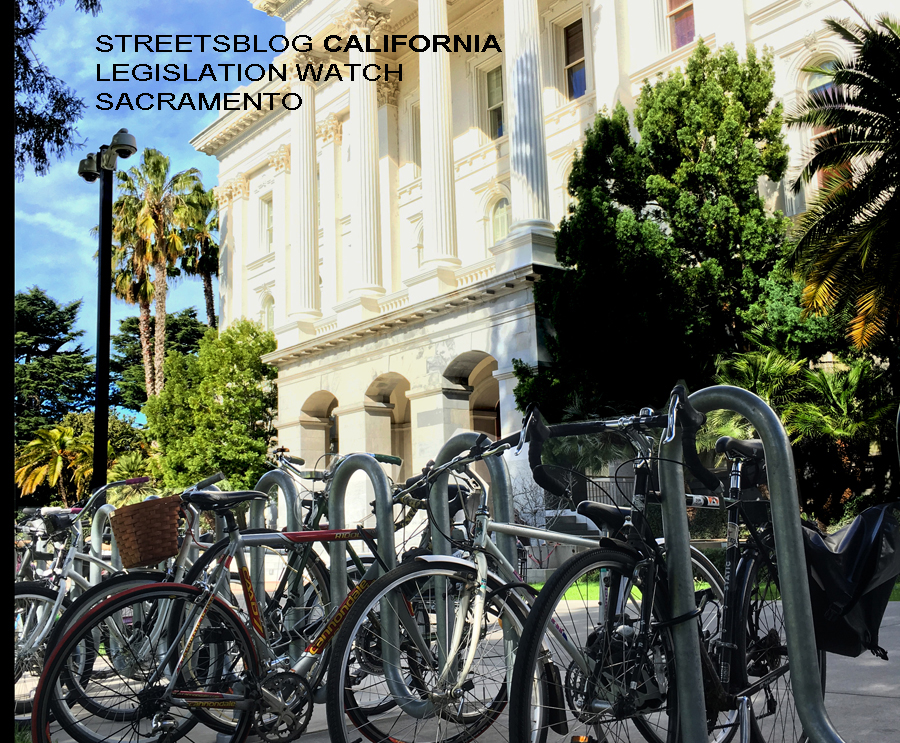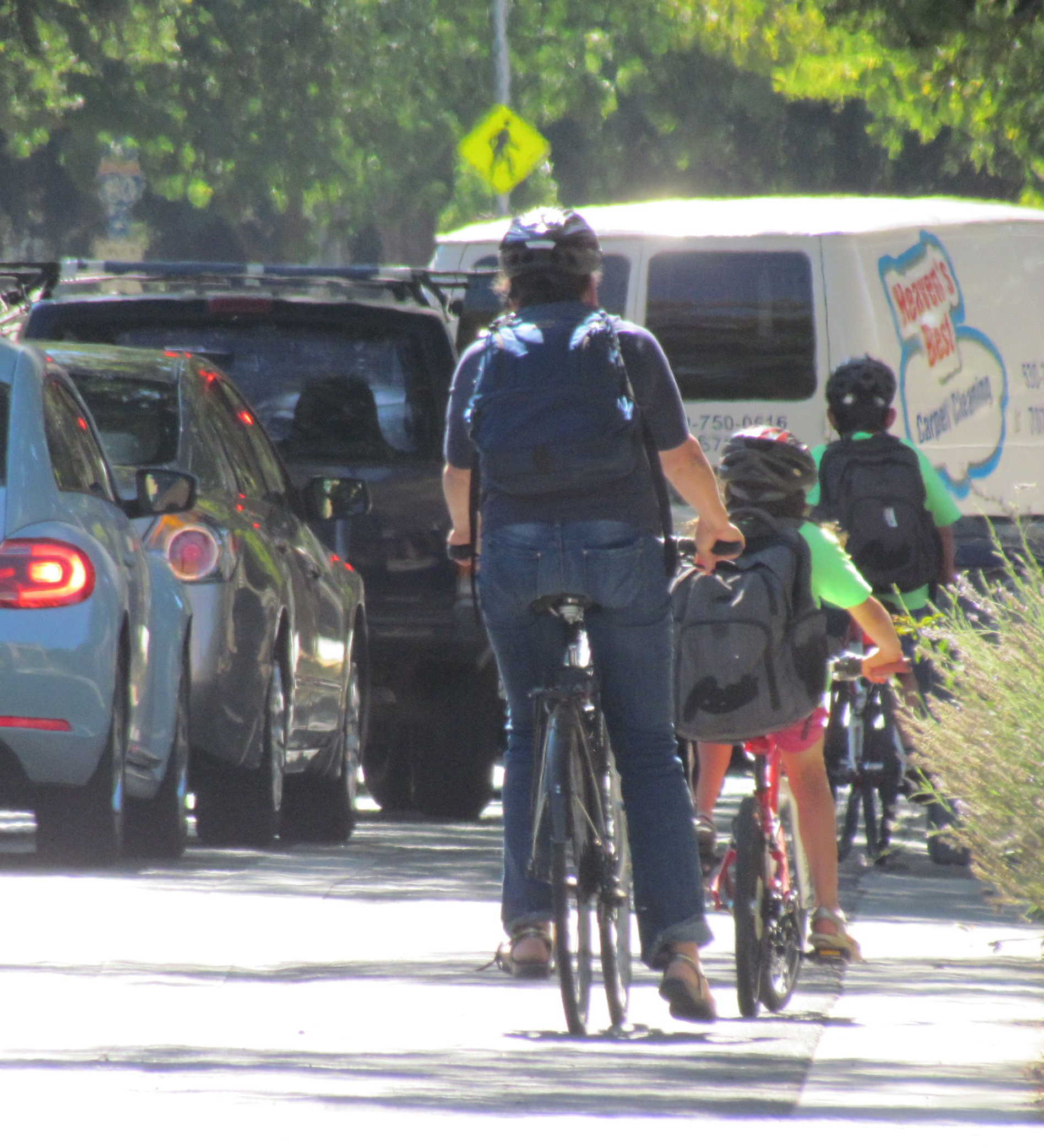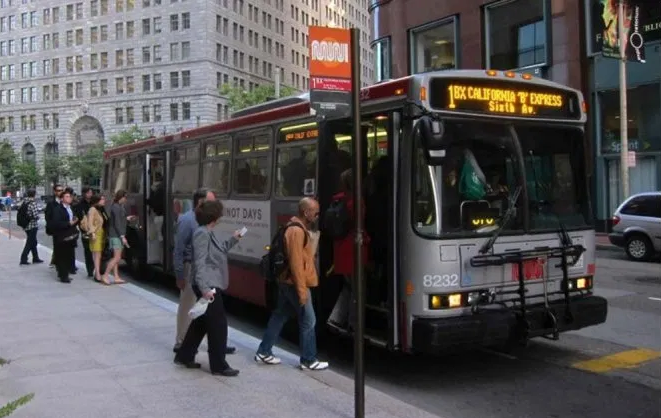Bill Would Dramatically Restructure Active Transportation Program
5:08 PM PDT on April 5, 2019

Note: GJEL Accident Attorneys regularly sponsors coverage on Streetsblog San Francisco and Streetsblog California. Unless noted in the story, GJEL Accident Attorneys is not consulted for the content or editorial direction of the sponsored content.
A bill that seeks to make major changes in the Active Transportation Program (ATP) will be heard on Tuesday in the Senate Transportation Committee. S.B. 152, from Senator Jim Beall (D-Campbell), would change the way ATP funding is allocated and managed, greatly increasing the amount that goes to, and is controlled by, regional governments.
S.B. 152 would shift most of the ATP money into the hands of the state's nine largest Metropolitan Planning Organizations (MPOs) by increasing the regional share of the program from forty to 75 percent. That money would be allocated to the regions by formula, based on population--meaning the bill's sponsor, the Bay Area's Metropolitan Transportation Commission (MTC), stands to gain a large chunk of guaranteed funding. Under S.B. 152, the MPOs would decide how to spend that money.
The bill would also increase the Small Urban/Rural portion of the program from ten to fifteen percent, and decrease the share that goes into the statewide competition from fifty to ten percent. In addition, that statewide portion would be reserved for large projects, which the MTC says are a more appropriate focus for the state than smaller ones.
The MTC says that its motivation is good governance, and that regions could do a better job of choosing and managing projects than the state can. The application process is too cumbersome, they say, and too difficult for understaffed planning agencies, and is out of scale for the size of the ATP and its projects.
But advocates say the program's application process and the intense public input that goes into it has led to better projects and has pushed agencies to focus on the program's goals, not just local agency goals. They must submit crash data and discuss how a project would improve safety, for example, and they must engage the community in making decisions. For planning agencies that don't have the capacity to do that, the ATP offers technical assistance through Safe Routes to Schools National Partnership so they can create better projects and stronger applications.
This has led to better planning in general, say advocates, with agencies who want ATP money pushed to broaden their approach. It has also led to a better use of state investments, because the projects selected for funding are better.
The MTC wants to do away with that and let each region come up with its own process for deciding which projects gets funded. "This is a really important funding source; it shouldn't be so hard to go after it," said Rebecca Long, Government Relations Manager for MTC.
Regions "have more flexibility; we are closer to project sponsors," said Kenneth Kao, who manages the Active Transportation Program within the MTC. "Right now, projects are evaluated by people from outside of the region. We have a lot more local expertise that we can bring to bear. We know jurisdictions and their needs, and applications could be potentially a lot smaller."
But advocates say that S.B. 152 would mean less public involvement and less transparency, and would lead to the state investing in projects that may be easier and less cumbersome to plan, but are not necessarily the most needed ones. The process of creating the ATP guidelines and scoring system involved hundreds of hours of meetings to gather a wide range of input. S.B. 152, say advocates, would dismiss all that work and be a major step backwards into a business-as-usual model of allocating transportation funding.
Advocates are concerned that the bill doesn't address the real problem: that the ATP is underfunded and the need for it is high throughout the state. Shifting the money from one government group to another wouldn't change that; it's just a fight over crumbs, they say. The bill's sponsor and its author are unhappy about projects that didn't get funding, but instead of moving to increase the program, they are looking for ways to secure the funding for their own projects instead of ones that scored higher.
Long says the MTC's goals are threefold: speeding up the allocation and funding process, making the program more accessible, and providing more flexibility in terms of the types of projects that can be funded. The new structure would mirror other transportation funding programs, notably the State Transportation Improvement Program, which basically allows regions to use funding however they want--limiting only how they spend it on transit, ironically.
Equality and Equity
On the face of it, dividing the money evenly per capita looks fair. But the ATP has created a model program that ensures its limited funding goes to areas that need it most, and that have historically received less investment, by using as judges volunteers with no stake in the outcome of the projects they score.
"A lot of time you'll hear about fair share, but that's a vision of equality," said Jessica Meaney, who worked on the creation of the ATP program when she was a policy director at the Safe Routes to School National Partnership. Such a vision "assumes the regions are the same--but they aren't."
She pointed to a 2013 study that found that low-income people are six times more likely to be hit by a car than others. "In L.A. county alone, there is a difference in life expectancy between Brentwood and Watts," she said. "We can't treat them as if they're the same." The last three ATP funding cycles have been a "bright star in California," she said, because "as a state we are prioritizing the most vulnerable first."
By statute, the ATP must award at least 25 percent of its money to benefit communities that have suffered from disinvestment. Every project that won funding in the last cycle, at least on paper, benefits a disadvantaged community in some way. That has sponsors of projects that can't win points on that score crying foul.
Chione Flegal of PolicyLink, who has also contributed to the ATP process, counters that "the fact that disadvantaged communities got funded well for five years does not mean we're failing other communities and that we should can the program--it means finally we are remedying a historical inequity, and we should count this as a success."
It's not easy to explain why it's important to focus on historical disinvestment. "It's a big shift to get people to feel accepting of the idea that money should be shared with people who've never had a dime of these investments," she said. "For example, the Central Valley has much greater needs relative to its population than does the Bay area, largely because of a historical lack of investment."
Unfortunately, "the relative wealth of the Bay Area is causing them to feel unfairly cut off from the state program," she said.
That feeling may be misplaced. There is a lot of built-in leeway around both defining a disadvantaged community as well as defining what in means to "benefit" one. Flegal says that the program "has been very generous in saying whether a project benefits a disadvantaged community," resulting in "an overinflation of credit" for doing so. This "seems to have inflamed the notion that we're only investing in disadvantaged communities," she said.
Despite this flexibility, MTC argues that prioritizing disadvantaged communities is misplaced. "If the goals are to reduce greenhouse gas emissions and increase safety," said Long, "it's not necessarily true that every project that would do that would be located in a disadvantaged community," she said.
And while as bill sponsors MTC is open to discussing what an equity set-aside should be--Long said that "we need to hear what those concerns are; we haven't heard them enumerated"--they don't think the set-aside "should be 100 percent."
Projects get higher scores if they can show a benefit to a disadvantaged community, but that is not the only criteria they are scored against. Many projects that didn't score high enough to get funding lost points because of things like missing documentation or lack of analysis of public health or safety impacts of the projects. That includes projects in the Bay Area, which had only two winning projects in the most recent statewide competition.
But the bigger point is that even high-scoring projects didn't get funded because, as Jessica Meaney pointed out several times, the ATP "is a small-scale, underfunded program trying to fill a huge need."
The MTC does not see increasing the overall pot of money as its primary concern. "In light of Prop 6 [the threatened gas tax repeal that lost in the November election], we didn't think this was the year to talk about increasing money for transportation," said Long. "Our concern is to see the funding we are getting be used more efficiently and get out the door faster."
Control and Transparency
Advocates are leery of the bill's proposal to give regions more control because of past experience, they say.
For example, the Safe Routes to Schools program, a precursor to the ATP and one that several advocates worked on before the ATP was formed, used a regional allocation process. "It had not worked well," said Flegal. "We saw jurisdictions doing things like proposing projects that engineers decided were necessary, but were disconnected from actual community needs--a walking path to a school that didn't go where the kids needed it, for example."
That program also faced political challenges in low-income communities, and did not address patterns of historical disinvestment. Advocates wanted to see something different in the ATP, which is why projects are scored on the quality of their community engagement. That aspect of applications, said Flegal, although it still needs work, has gotten stronger over time.
"There have been some great examples in the Central Valley and other places where people have taken different approaches," said Flegal. "That's what we want to be see score high."
Even so, in the ATP, "as with any competitive grant program," she said, "we also see proposals written for projects that they've been thinking about, that happen to go through a disadvantaged community, and they claim credit for benefiting them--without having consulted the community."
That's one of the reasons they wanted the state to oversee the ATP for consistency and transparency. "For us, the state needed a firm hand to ensure we were still taking an equity lens and applying it in a solid way. We are skeptical that the MPOs will do that," said Flegal. While some MPOs do take this charge seriously, under S.B. 152 "there wouldn't be a check to make sure they're doing it."
State control "allows for greater equity among regions and more consistency in the stakeholder process. And it ensures that it is a competitive program that benefits disinvested places," said Flegal. "It could be strengthened; we are continually working with partners on how to do this. But we don't think that spending the money on a per-capita basis will improve outcomes."
Dividing Funding Differently
In addition to giving MPOs more control over a reliable, population-based share of the program, S.B. 152's proposed shift in funding would have other consequences. For one, the statewide competitive portion would shrink considerably, to ten percent of the overall program. That works out to about $30 million per two-year cycle. As discussed in earlier Streetsblog posts, there has been a push for that portion to focus on larger, "transformative" projects, and in the last cycle that seemed to be happening, with five large, multi-city projects getting funding.
The question of whether that's appropriately the sole focus for the statewide portion is not quite settled, however. For one thing, the shrinking pot of money would make it very difficult to fund more than one or two projects, if that. For another, some of the projects currently winning funding under the statewide competition are truly transformative for their areas, even if they are small.
S.B. 152 would also increase the share of funding going to the Small Urban/Rural portion of the program. This set-aside was created because, after the large regions insisted on their own carve-out, smaller jurisdictions were afraid they would never be able to compete against larger, better funded areas in the statewide portion. So if the MPOs are getting more, it stands to reason that the Small Urban/Rural areas should as well, right?
But that's not exactly how it would work under S.B. 152. Now, all projects compete first on a level playing field--or as level as the ATP has been able to make it--in the statewide portion, which accounts for half of the total. Then they compete for either the MPO or Small Urban/Rural portion, depending where they are located.
If the statewide portion shrinks to ten percent, then the overall amount that Small Urban/Rural areas are eligible for also shrinks, from sixty percent to 35 percent, even with the bump in that portion.
Other MPOs haven't wanted to weigh in on S.B. 152, at least yet. SCAG has not taken a position on the bill, and it stands to reason that others are waiting to see what happens. The bill will first be heard in the Senate Transportation Committee, which is chaired by the bill's author, so it is likely to pass.
There's another bill in the Assembly that would make the same changes. A.B. 1402 is from Assemblymember Cottie Petrie-Norris (D-Laguna Beach), another legislator whose pet project did not receive funding in the latest ATP cycle. That bill would add a twist, taking away the administration of the ATP from the California Transportation Commission altogether and putting it in the hands of Caltrans.
The ATP is a complex little program that is trying to solve many problems all on its own with very little funding. It's too bad that the solution to its problems, at least according to these bills, is to take a step backwards towards business as usual, rather than learning from what the program has achieved and strengthening it.
Follow Streetsblog California on Twitter @StreetsblogCal
Streetsblog California editor Melanie Curry has been thinking about transportation, and how to improve conditions for bicyclists, ever since commuting to school by bike long before bike lanes were a thing. She was Managing Editor at the East Bay Express, editor of Access Magazine for the University of California Transportation Center, and earned her Masters in City Planning from UC Berkeley.
Stay in touch
Sign up for our free newsletter
More from Streetsblog California
Active Transportation Program Calls for Volunteer Evaluators
Apply to be a volunteer ATP application evaluator by May 10.
Study: When Speed Limits Rise on Interstates, So Do Crash Hot Spots on Nearby Roads
Rising interstate speeds don't just make roads deadlier for people who drive on them — and local decision makers need to be prepared.
Eyes on the Street: New Lincoln Park Avenue Bike Lanes
The recently installed 1.25-mile long bikeway spans Lincoln Park Avenue, Flora Avenue, and Sierra Street - it's arguably the first new bike facility of the Measure HLA era
Independent Safety Advocates Beef up the Wiggle
Signs and soft-hit posts installed by advocates make the Wiggle bike route calmer and safer for cyclists and pedestrians
Thursday’s Headlines
LA Metro declares emergency over attacks on bus operators; Some deadly Bay Area streets to see safety fixes; Tax ride-hail to save transit? More




